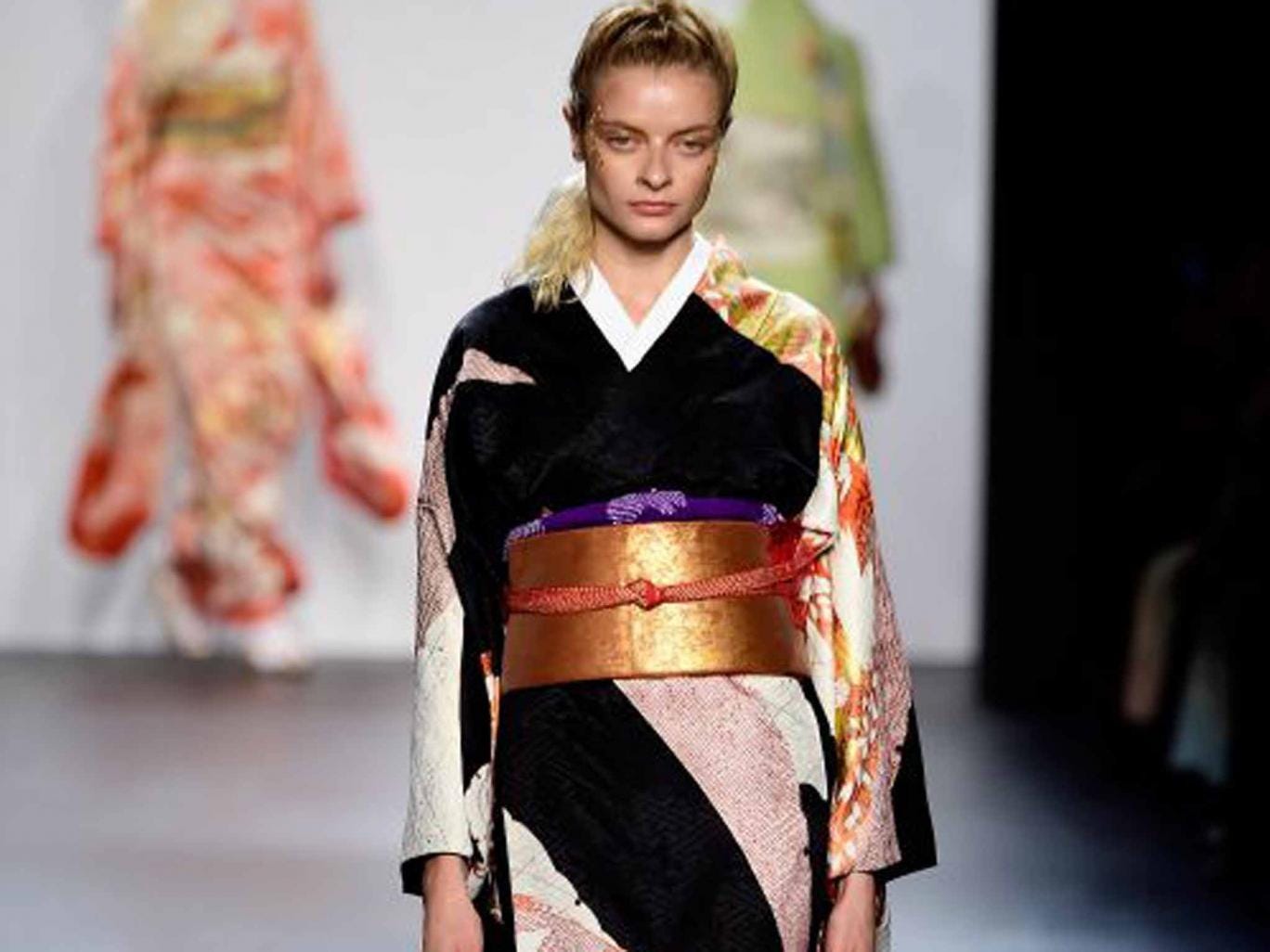How designer Hiromi Asai plans to take the kimono into the world of high fashion
Last month, Hiromi Asai's New York Fashion Week show looked much like others happening across the city: the throb of “Uptown Funk” filled the room as lithe models strutted down the runway; camera shutters clicked; the front row appeared unmoved while the crowds behind craned their necks to watch the spectacle.
But rather than wearing haute couture gowns or the latest in prêt-à-porter, the models were decked out in formal silk kimonos.
Asai, a designer and stylist born in Tokyo and now living in the US, is on a mission to bring handmade kimonos to the world of high fashion. While various big-name designers have adopted different takes on the style over the years, Asai's goals are loftier: she wants the kimono to be seen as a universal style of dress, one that would work for Jennifer Lawrence on the Golden Globes red carpet.
“It's easier to just show the kimono as culture, but I want to show the kimono as fashion,” Asai says. “We don't use Japanese music or Japanese motifs in the show. We display the kimono in a Western setting.”
For Asai, bringing the kimono back isn't just a lark. The entire kimono-making industry is in crisis, and the designer sees acceptance outside of Japan as its path to salvation. Her first step was to present an official show at New York Fashion Week after launching a successful Kickstarter campaign last year to raise money to “show the real kimono to the world”.
The kimono has existed for more than a thousand years, but at the turn of the 20th century Western-style clothing entered Japan and started changing the fashion landscape. Over the ensuing decades, the kimono transformed from an everyday garment into one worn mainly on special occasions.

photo: formal dresses Christchurch
While the kimono is still revered as Japan's national costume, the industry faces trouble from multiple sides. For one, the market has seen a sharp decline in sales. In 1980, kimonos were an almost $20bn industry, says Osamu Nasu, a representative from Kimono Artisan Kyoto, an association of textile designers who collaborated with Asai. But in 2015, it had shrunk to about $3bn.
Then there are the artisans who painstakingly craft the colourful, intricate textiles from which kimonos are made. This class of craftsmen is ageing, and for the first time in centuries few up-and-comers are available to replace the declining workforce.
“There are still many people interested in making kimonos, even younger people, but kimono-making is like a hobby, not a business,” Nasu says. “All of the income is very low, so even in the very professional, senior artisans, they need another job.” The kimono's future looks especially bleak when the artists who have the most reverence for the garments can't afford to actually buy them.
Sleeves on the line: a model walks the runway wearing a Hiromi Asai design last month
There is hope for the kimono in modern Japan, however. Manami Okazaki, author of the book Kimono Now, says young people in the country still care deeply about preserving this element of their history. Many are “getting into kimono culture in different ways,” she says – for example, in the Harajuku neighbourhood of Tokyo, known for being the place where groups of young people show off their wild street style, including those who belong to the kawaii (“cute”) and gothic Lolita style subcultures. Okazaki says people have found new ways to wear the garment – such as backward or with trainers – and more accessible options in lower-cost, laser-printed cotton versions.
One of the biggest new trends is the denim kimono, which has the bonus of being easy to wear. According to Okazaki, the denim fabric is simpler to maintain – it can go in the washing machine – and it folds more easily around the waist than traditional silk versions. This is no small factor, given the intricacy of the formal kimono and the industry that has risen around teaching people how to wear it. While there are now instruction videos on YouTube, kimono wearers have traditionally attended formal schools or hired stylists to learn the technique, incurring additional costs. For her runway presentation, Asai hired four dressers to help backstage.
Rather than campaigning for more approachable, lower-cost versions, Asai thinks the focus should be on raising awareness of the “authentic kimono” on a global scale. Not everybody can afford the handmade silk version (or handle the production that goes along with putting it on), so Asai wants the fashion world to see it as a universal form of haute couture.
By expanding the market to affluent buyers in countries beyond Japan and, more importantly, saving the artisans and their craft, she thinks that the entire industry could get a much-needed influx of cash and interest. “We need to show the brilliance of the kimono to the world using the handmade market,” Asai says, “and then maybe the kimono lovers will increase all over the world. This is the first step.”
Read more at: prom dresses online
Comments